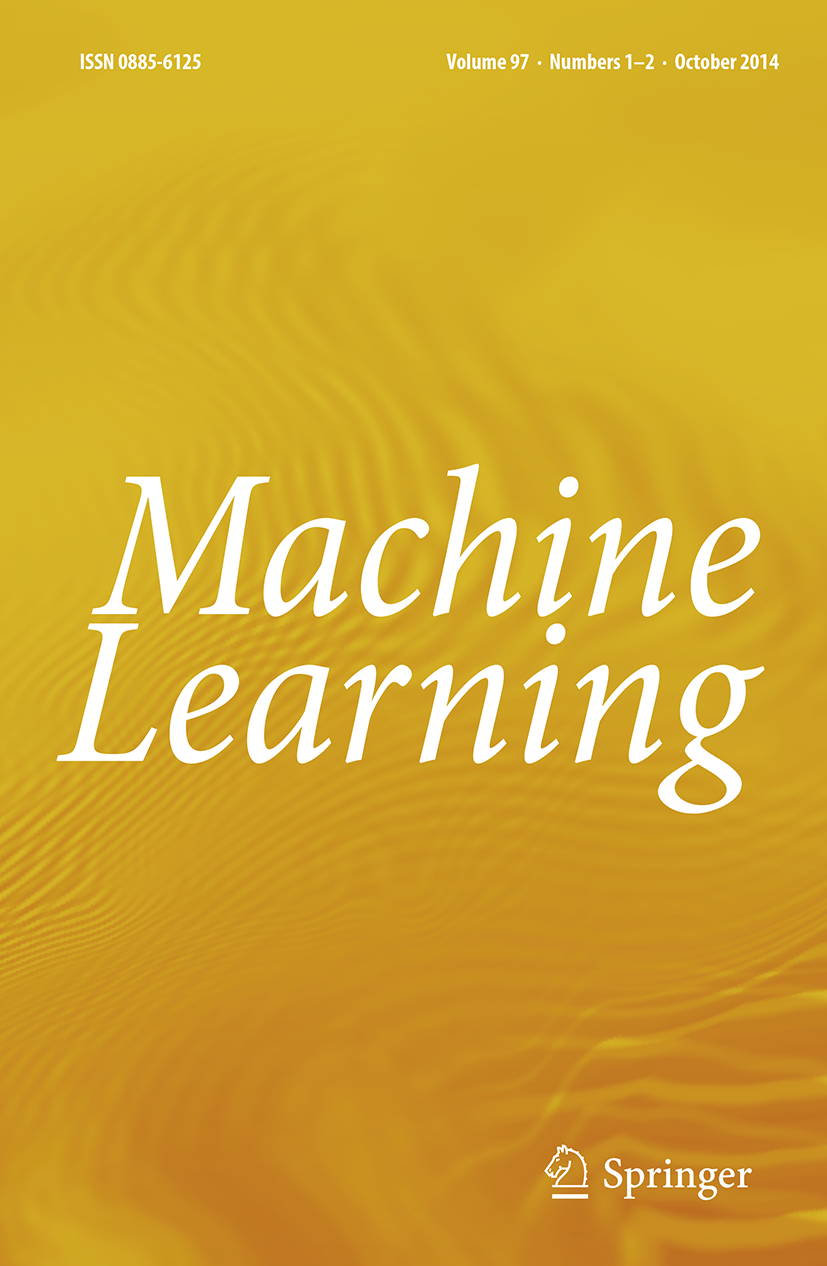link.springer.com/article/10.1023/A:1010933404324
Preview meta tags from the link.springer.com website.
Linked Hostnames
19- 25 links tolink.springer.com
- 9 links towww.springernature.com
- 7 links toscholar.google.com
- 2 links tocitation-needed.springer.com
- 2 links tosupport.springernature.com
- 1 link toauthorservices.springernature.com
- 1 link tobeta.springernature.com
- 1 link toidp.springer.com
Thumbnail

Search Engine Appearance
https://link.springer.com/article/10.1023/A:1010933404324
Random Forests - Machine Learning
Random forests are a combination of tree predictors such that each tree depends on the values of a random vector sampled independently and with the same di
Bing
Random Forests - Machine Learning
https://link.springer.com/article/10.1023/A:1010933404324
Random forests are a combination of tree predictors such that each tree depends on the values of a random vector sampled independently and with the same di
DuckDuckGo
Random Forests - Machine Learning
Random forests are a combination of tree predictors such that each tree depends on the values of a random vector sampled independently and with the same di
General Meta Tags
80- titleRandom Forests | Machine Learning
- charsetUTF-8
- X-UA-CompatibleIE=edge
- applicable-devicepc,mobile
- viewportwidth=device-width, initial-scale=1
Open Graph Meta Tags
6- og:urlhttps://link.springer.com/article/10.1023/A:1010933404324
- og:typearticle
- og:site_nameSpringerLink
- og:titleRandom Forests - Machine Learning
- og:descriptionRandom forests are a combination of tree predictors such that each tree depends on the values of a random vector sampled independently and with the same distribution for all trees in the forest. The generalization error for forests converges a.s. to a limit as the number of trees in the forest becomes large. The generalization error of a forest of tree classifiers depends on the strength of the individual trees in the forest and the correlation between them. Using a random selection of features to split each node yields error rates that compare favorably to Adaboost (Y. Freund & R. Schapire, Machine Learning: Proceedings of the Thirteenth International conference, ***, 148–156), but are more robust with respect to noise. Internal estimates monitor error, strength, and correlation and these are used to show the response to increasing the number of features used in the splitting. Internal estimates are also used to measure variable importance. These ideas are also applicable to regression.
Twitter Meta Tags
6- twitter:site@SpringerLink
- twitter:cardsummary_large_image
- twitter:image:altContent cover image
- twitter:titleRandom Forests
- twitter:descriptionMachine Learning - Random forests are a combination of tree predictors such that each tree depends on the values of a random vector sampled independently and with the same distribution for all...
Item Prop Meta Tags
3- position1
- position2
- position3
Link Tags
9- apple-touch-icon/oscar-static/img/favicons/darwin/apple-touch-icon-6ef0829b9c.png
- canonicalhttps://link.springer.com/article/10.1023/A:1010933404324
- icon/oscar-static/img/favicons/darwin/android-chrome-192x192.png
- icon/oscar-static/img/favicons/darwin/favicon-32x32.png
- icon/oscar-static/img/favicons/darwin/favicon-16x16.png
Links
59- http://scholar.google.com/scholar_lookup?&title=An%20empirical%20comparison%20of%20voting%20classification%20algorithms&journal=Machine%20Learning&volume=36&pages=105-139&publication_year=1999&author=Bauer%2CE.&author=Kohavi%2CR.
- http://scholar.google.com/scholar_lookup?&title=Arcing%20classifiers%20%28discussion%20paper%29&journal=Annals%20of%20Statistics&volume=26&pages=801-824&publication_year=1998&author=Breiman%2CL.
- http://scholar.google.com/scholar_lookup?&title=Bagging%20predictors&journal=Machine%20Learning&volume=26&issue=2&pages=123-140&publication_year=1996&author=Breiman%2CL.
- http://scholar.google.com/scholar_lookup?&title=Boosting%20the%20margin%3AAnewexplanation%20for%20the%20effectiveness%20of%20voting%20methods&journal=Annals%20of%20Statistics&volume=26&issue=5&pages=1651-1686&publication_year=1998&author=Schapire%2CR.&author=Freund%2CY.&author=Bartlett%2CP.&author=Lee%2CW.
- http://scholar.google.com/scholar_lookup?&title=On%20the%20algorithmic%20implementation%20of%20stochastic%20discrimination&journal=IEEE%20Trans.%20on%20Pattern%20Analysis%20and%20Machine%20Intelligence&volume=22&issue=5&pages=473-490&publication_year=2000&author=Kleinberg%2CE.